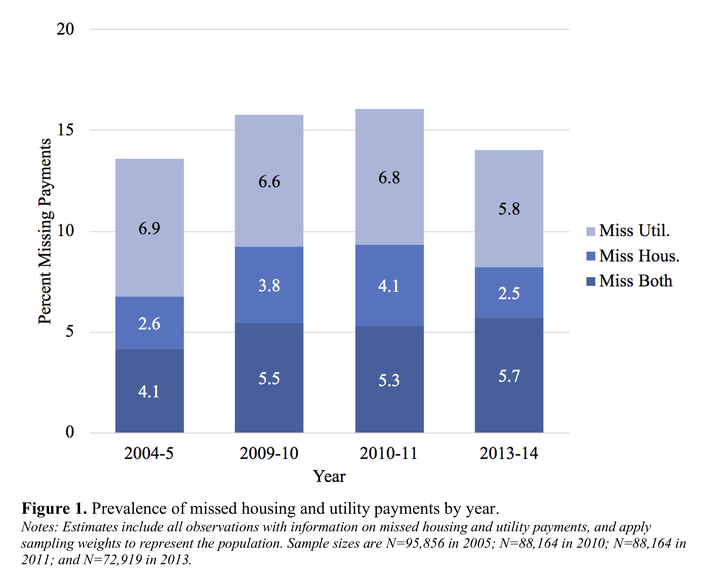Past Due: Combinations of Utility and Housing Hardship in the United States
 Prevalence of Missed Housing and Utility Payments by Year
Prevalence of Missed Housing and Utility Payments by Year
Abstract
Millions of households in the United States are forced to juggle different basic needs. Housing and utility costs consume the majority of many households’ monthly incomes. Consequences for missed payments include large fees, utility shutoffs, and evictions. Either hardship puts households at risk of losing adequate shelter. This study examines the prevalence and persistence of different combinations of housing and/or utility hardship using nationally representative panel data from the Survey of Income and Program Participation (SIPP). It also predicts transitions into these hardship combinations following commonly studied household dynamics: income changes, household composition changes, and poor health. Utility hardship is both more common and persistent than housing hardship, and households experiencing utility hardship have more disadvantaged characteristics. Entries into poor health are the strongest predictors of hardship. Other shocks predict one form of hardship more than the other. Most notably, income losses predict housing hardship but not utility hardship.